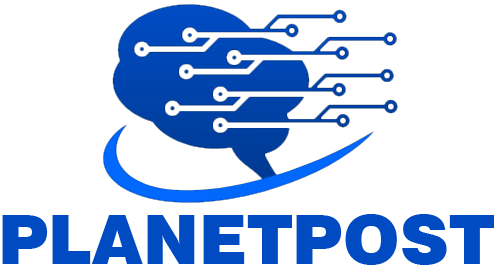For years, organizations have embraced artificial intelligence in various forms—automation tools, data analytics engines, chatbots, and more. But now, with the emergence of Agentic AI, the game has truly changed. Unlike past AI models that passively analyze or respond to inputs, Agentic AI actively makes decisions, initiates tasks, and drives outcomes with minimal human intervention. This shift is more than technological—it’s cultural, strategic, and deeply transformational.
However, any transformation of this magnitude requires more than just implementation. It demands buy-in from everyone from the C-suite to the newest hires on the floor. The key to successful adoption lies in clear communication, organizational alignment, and an engaging rollout strategy that brings everyone into the fold. To make the transition to Agentic AI smooth—and even enjoyable—leaders must take intentional steps. Here’s how.
Lay Out Your Vision
Before anyone can get behind Agentic AI, they need to understand why it matters. Start with the “why.” That’s how you align your organization around a common purpose and create momentum from day one. The first step in this process is engaging your executive leadership team. Bring them into the vision. Help them see not only how Agentic AI will support the business’s broader goals, like efficiency, growth, innovation, but also how it will solve real problems they actually care about.
Once the leadership team is aligned, work as a unit to cascade the vision down through the organization. This isn’t about a top-down announcement; it’s about a shared journey. People are far more likely to support and champion a new initiative when they understand what they’re working toward and why it matters. By grounding your rollout in a clear, future-focused vision, you build trust—and you open the door to long-term success.
Open Conversations
With the vision laid out, it’s time to start talking—and not just from a podium. Real, open conversations are essential. Whether it’s through one-on-one meetings with senior staff or an all-hands company meeting, it’s important to address the broader shift toward Agentic AI and invite dialogue. This may sound obvious, but truly encouraging questions also means preparing to answer them and responding transparently. You can’t foster trust with partial answers or corporate spin. Instead, meet concerns head-on. Be honest when you don’t know something. Be clear about timeliness, implications, and expected changes. And always link your answers back to the core vision: “Agentic AI is the way of the future, and here’s why.”
If you’re confident in the vision you’ve laid out, these conversations should be straightforward. And even if some questions are uncomfortable, your willingness to answer them openly will go a long way in building internal credibility.
Provide Training
Once you’ve communicated the why and welcomed feedback, it’s time to provide people with the tools they need to succeed. That starts with training—lots of it. As any good leader knows, training is critical to any technology rollout. With Agentic AI, that means teaching people how to use the tools and helping them understand the mindset shift involved in trusting AI to take on more autonomous roles.
It’s not enough to conduct a single webinar and call it done. Training should be department-specific, hands-on, and deeply relevant to how employees work day-to-day. Bring in use cases that reflect the realities of their roles. Involve them in building workflows or designing prompts. Encourage them to experiment.
Beyond formal training sessions, create environments where people can immerse themselves in the technology. Consider a “sandbox” where employees can try out Agentic AI tools without fear of failure or retribution. The more comfortable your teams are, the more confidently they’ll use—and champion—the technology.
And remember: your customers, partners, and other external stakeholders will ultimately feel the effects of your AI implementation. When your employees are fully trained and confident, that sense of ease and innovation will be felt far beyond your walls.
Make It Fun
Think back to your school days. Chances are, you don’t remember every lecture or quiz—but you probably remember the projects, games, and group activities that made learning exciting. The same applies to introducing new technology in the workplace.
Adopting Agentic AI doesn’t have to be daunting—it can, and should, be energizing. Leaders should look for ways to make the experience enjoyable, memorable, and, yes, even fun.
For example, run internal contests for the most innovative ways to use Agentic AI. Encourage ideas that improve both products and internal processes. Recognize the winners publicly and reward creativity. You can also launch an AI-focused newsletter that highlights the latest Agentic AI developments, both within your organization and in the wider tech world. Make it interactive. Invite employees to submit articles or insights and offer prizes for the most-read or most-shared submissions.
You can even turn training into a hands-on challenge, encouraging teams to collaborate across functions on small Agentic AI projects. Let them explore different use cases and present their results. This not only accelerates adoption, but also encourages different teams to think creatively about how Agentic AI can drive value in their unique areas of the business. By making the experience fun, you reduce resistance and increase engagement—setting the stage for a thriving, innovation-driven culture.
Keep the Conversation Going
Even after the initial rollout, the work isn’t done. New technologies evolve, and so do people’s reactions to them. Questions, doubts, and opportunities will continue to surface over time—and it’s leadership’s job to keep addressing them.
You can’t afford to shy away from concerns just because the implementation phase is over. Instead, adopt an ongoing dialogue approach. Encourage feedback loops. Host quarterly “AI town halls” where updates are shared, and questions are welcomed. Invite internal AI champions to present learnings and experiments. If a question or challenge grows into something more substantial, address it head-on. Elevate it to product or implementation teams. Revisit your training. Reengage leadership. This level of agility not only reinforces your commitment to excellence, but also keeps your organization ahead of the curve.
The Future Is Agentic
Agentic AI isn’t just another tool in the tech stack; it’s a paradigm shift. It represents a new era in how work gets done, decisions are made, and value is created. But with great power comes great responsibility—and great opportunity.
For organizations that take the time to communicate clearly, train thoroughly, and engage their people in meaningful and fun ways, the payoff is enormous: greater innovation, stronger culture, and a workforce that feels empowered rather than intimidated. At the end of the day, technology doesn’t transform organizations—people do. And when those people are equipped, inspired, and aligned behind a shared vision, there’s no limit to what they can achieve.


